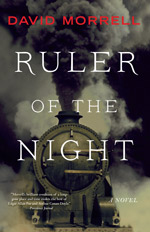 “The Telomere Effect: a Revolutionary Approach to Living Younger, Healthier, Longer,” by Elizabeth Blackburn, PhD and Elissa Epel, PhD
“The Telomere Effect: a Revolutionary Approach to Living Younger, Healthier, Longer,” by Elizabeth Blackburn, PhD and Elissa Epel, PhD
(Grand Central Publishing, pp 399, $28.00)
Whoever came up with the subtitle for this fascinating book did an excellent job creating a strong hook. Who indeed would not want to live longer? Contrary to what you may consider, that life is just a game of roulette, with molecules moving one way and DNA reacting in another, the authors claim that you can certainly influence your longevity. To entice you into their secret, they ask: why some people at 40 look like 60, while others at 60 look like 40? The story narrated here deals with telomerase and, more precisely telomeres, which are the capstones at the end of the DNA, whose states mirror the way we treat ourselves. Good telomeres will keep you disease free longer. Translation: your lifespan will be elongated.
Here, as in diet books, we find that the main culprits for premature aging: quality of sleep, frequency of exercise, types of diet, and chronic stress, all of which deeply impact our telomeres. Over the book, Dr. Elizabeth Blackburn (Nobel Prize winner) and Dr. Elissa Epel clearly demonstrate the mind-body connection. Having recurring negative thoughts for example will affect also your telomeres, and your appearance. Telomeres shorten in repeated adverse conditions. People looking healthy have long telomeres. So the main question you should ask yourself, and it should make you want to pick up this book at once, is whether a body who has been exposed to all types of unhealthy habits and physical and self-inflicted mental abuses can reverse damages done to the capstones of its DNA? In other words, are frayed telomeres irreversible? The book goes at great length to provide answers. Particularly fascinating are the chapters discussing the impact of early trauma during pregnancy and income inequalities to show the relations between depression and schizophrenia . . . which logically would mean that we may pay the price for circumstances that we do not control and that, in turn, impact our appearance. But nothing is set in black and white, and life choices still play their part. One thing is certain, reading this book will not age you.




